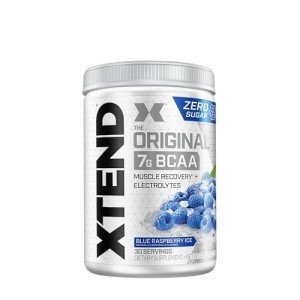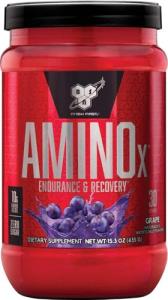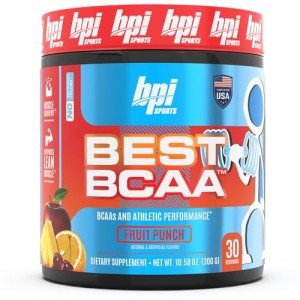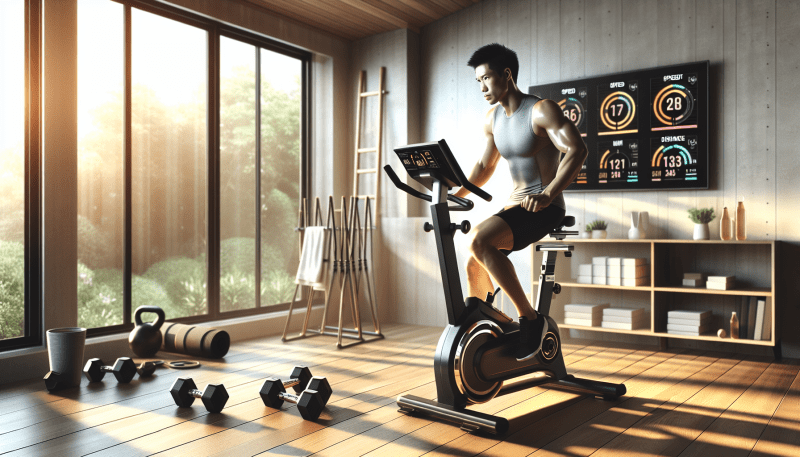Introduction
Strength training is one of the most effective ways to build muscle, burn fat, enhance endurance, and improve overall fitness. Whether your goal is muscle growth, fat loss, athletic performance, or general strength improvement, tailoring your strength workouts to your fitness goals is key. This guide will break down the best approaches for different fitness objectives, covering essential exercises, training methods, and expert tips.
Beginner’s Guide to Strength Training
Key Principles:
- Focus on mastering form
- Start with bodyweight exercises
- Progressive overload using resistance bands and light weights
- Full-body workouts 2-3 times a week
Best Exercises:
- Bodyweight Basics: Squats, Push-ups, Bridges, Planks
- Machine-Based Movements: Leg Press, Lat Pulldown, Seated Row
- Dumbbell Movements: Goblet Squats, Shoulder Press, Bent-over Rows
Beginner Routine:
- Squats - 3 sets of 10 reps
- Dumbbell Shoulder Press - 3 sets of 10 reps
- Seated Rows - 3 sets of 12 reps
- Plank Hold - 3 rounds of 30 seconds
How to Build Strength and Endurance for Long-Term Fitness
Key Principles:
- Higher rep range (15-20 reps)
- Lighter to moderate weights (50-70% of 1-rep max)
- Short rest periods (30-45 seconds)
- Incorporating functional movements
Best Exercises:
- Bodyweight Strength: Push-ups, Pull-ups, Lunges
- Loaded Carries: Farmer’s Walk, Sled Push
- High-Rep Lifting: Kettlebell Complexes, Resistance Band Workouts
Sample Routine:
Perform 4 rounds of the following circuit:
- 20 Bodyweight Squats
- 15 Kettlebell Swings
- 12 Push-ups
- 30-Second Farmer’s Carry
- 15 Bent-over Rows
Strength Training for Muscle Growth
The Science Behind Muscle Growth: What You Need to Know
How Muscles Grow:
- Progressive Overload: Continually increasing weight or reps
- Protein Synthesis: Repairing and building new muscle fibers
- Recovery & Sleep: Essential for muscle repair
Nutritional Factors:
- Protein Intake: 1.2-2.2g per kg of body weight
- Healthy Fats: Supports hormone production
- Carbohydrates: Provides energy for workouts
Supplement Considerations:
- Whey Protein: Enhances muscle recovery
- Creatine: Boosts strength and endurance
- BCAAs: Helps muscle recovery and reduces soreness
Key Principles: for Muscle Growth
- Moderate to heavy weights (65-85% of 1-rep max)
- 6-12 reps per set
- 3-5 sets per exercise
- Focus on progressive overload
- Rest: 30-90 seconds between sets
Best Exercises:
- Compound Lifts: Bench Press, Squats, Deadlifts, Pull-ups
- Isolation Movements: Bicep Curls, Leg Extensions, Tricep Dips
Recommended Routine:
|
Day |
Focus |
|
Monday |
Chest & Triceps |
|
Tuesday |
Back & Biceps |
|
Wednesday |
Rest or Active Recovery |
|
Thursday |
Legs & Shoulders |
|
Friday |
Full-Body Strength |
|
Saturday |
Core & Mobility |
|
Sunday |
Rest |
Key Principles: for Muscle Growth
- Progressive Overload: Gradually increasing weights or resistance over time ensures continuous muscle growth and adaptation, which leads to improved strength and overall muscle development.
- Hypertrophy Training: To effectively build muscle mass, it is essential to perform exercises within the hypertrophy range, which typically consists of 6-12 repetitions per set while using moderate to heavy weights that challenge your muscles without compromising proper form.
- Compound Exercises: Engaging in multi-joint movements such as squats, deadlifts, bench presses, and pull-ups not only stimulates multiple muscle groups simultaneously but also enhances coordination, strength, and overall athletic performance.
- Rest and Recovery: Ensuring that you provide your muscles with at least 48 hours of rest before training the same muscle group again is crucial for preventing overtraining, reducing the risk of injury, and allowing for proper muscle repair and growth.
Best Strength Exercises for Muscle Growth
- Squats - A fundamental lower-body movement that targets the quadriceps, hamstrings, glutes, and core, making it one of the most effective exercises for building overall strength and power.
- Deadlifts - A full-body exercise that heavily engages the posterior chain, including the lower back, glutes, and hamstrings, while also improving grip strength and core stability.
- Bench Press - A classic upper-body exercise that primarily works the chest, shoulders, and triceps, contributing to improved upper-body strength and muscle definition.
- Pull-ups/Chin-ups - Highly effective for building a strong back and biceps, pull-ups also engage the core and shoulders, making them an essential part of any strength training program.
- Overhead Press - An excellent exercise for developing shoulder strength and stability, the overhead press also engages the triceps and core for additional support and balance.
- Barbell Rows - A powerful back-building exercise that strengthens the lats, traps, and rear deltoids while also improving overall pulling strength and posture.
Training Split for Muscle Growth
- Day 1: Chest & Triceps - Focus on bench presses, dips, and overhead presses to develop upper-body pushing strength.
- Day 2: Back & Biceps - Incorporate pull-ups, barbell rows, and face pulls to build a strong and well-defined back.
- Day 3: Legs & Core - Engage in squats, deadlifts, and lunges to develop powerful legs and improve core stability.
- Day 4: Shoulders & Arms - Utilize overhead presses, lateral raises, and bicep curls to enhance upper-body definition.
- Day 5: Rest or Active Recovery - Allow your body time to recover while engaging in light activities such as yoga, stretching, or mobility exercises.
Strength Training for Fat Loss
Strength training for fat loss focuses on high-intensity resistance workouts combined with metabolic conditioning to maximize calorie burn and preserve muscle mass while shedding excess body fat.
Best Methods for Fat Loss
- Circuit Training: Performing multiple exercises in succession with minimal rest between sets helps elevate heart rate, increase calorie burn, and improve cardiovascular endurance.
- High-Intensity Interval Training (HIIT): Alternating short bursts of intense exercise with periods of rest or low-intensity movement enhances fat loss by increasing post-exercise oxygen consumption (EPOC) and metabolic rate.
- Metabolic Resistance Training: Engaging in resistance exercises with moderate weights and high repetitions (typically 12-15 reps per set) while minimizing rest intervals creates a powerful fat-burning effect.
- Compound Lifts with Cardio Bursts: Incorporating cardiovascular movements such as jump rope, burpees, or rowing between strength exercises maintains a high level of intensity and maximizes fat-burning potential.
Example Fat Loss Strength Workout
- Squats - 12 reps to target lower-body muscles and elevate heart rate.
- Kettlebell Swings - 30 seconds of explosive movements to enhance cardiovascular endurance.
- Deadlifts - 10 reps to engage multiple muscle groups and promote strength development.
- Jump Rope - 1 minute of rapid movement to improve coordination and torch calories.
- Push-ups - 15 reps to build upper-body endurance and improve muscular stability.
- Mountain Climbers - 30 seconds to engage the core and boost overall metabolism.
Strength Training for Athletes
Athletes require a combination of power, endurance, and agility training to enhance their performance in specific sports while reducing the risk of injuries.
Key Principles for Athletes
- Explosive Strength: Developing power through movements such as power cleans and snatches enhances an athlete’s ability to generate force quickly, which is crucial for sports requiring speed and agility.
- Sport-Specific Training: Tailoring workouts to mimic the movement patterns of a particular sport ensures optimal performance and functional strength development.
- Functional Strength: Incorporating unilateral exercises, plyometrics, and agility drills helps improve coordination, balance, and overall athleticism.
- Periodization: Structuring training into different phases allows athletes to peak at the right time and prevent burnout or overtraining.
Best Strength Exercises for Athletes
- Power Cleans - An advanced movement that enhances explosiveness, coordination, and overall athletic performance.
- Sled Pushes - A highly effective drill for developing acceleration, lower-body power, and conditioning.
- Box Jumps - Improves an athlete's ability to generate force and increase vertical leap capabilities.
- Turkish Get-Ups - A full-body movement that enhances stability, coordination, and functional strength.
Best Strength Training Equipment for Home Workouts
Essential Equipment:
- Dumbbells
- Kettlebells
- Resistance Bands
- Pull-up Bar
- Adjustable Bench
Advanced Equipment:
- Barbell with Weight Plates
- Squat Rack
- Weighted Vest
- Battle Ropes
Home Workout Example:
- Warm-up: Jump Rope, Dynamic Stretching
- Main Workout: Dumbbell Squats, Resistance Band Rows, Kettlebell Swings
- Cooldown: Stretching and Foam Rolling
Conclusion







